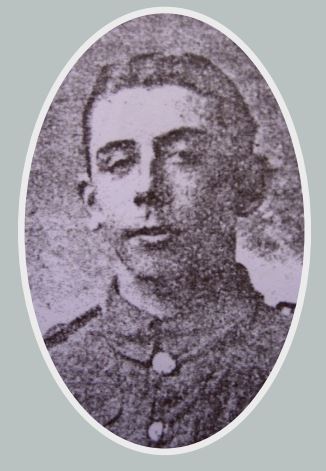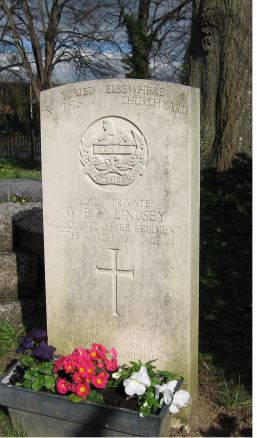2/5th Battalion, Gloucestershire Regiment

William Bernard Henry Lindsey was born in Gloucester in early 1898; he was baptised at St James’ Church on 15 June 1898. His parents were Samuel George and Sarah Ann (née Hill), then living at 3 Upton Street, Gloucester. Besides William, the couple had two daughters, Elsie M and Beatrice M A, and later adopted William Ernest Powell Clark (who was eighteen months old at the time of the 1918 Census). The 1901 Census shows the family living at 9 Percy Street, Gloucester (Samuel Linsey was a carpenter and joiner) but they had moved to 9 Ladybellgate Street, Gloucester ten years later and Samuel was now a foreman packer with a furniture removal company.
No Army Service or Pension Record appears to have survived for William but his Medal Index Card records his enlistment on 30 April 1914, when he would have been 16. It would appear likely that he joined as a Territorial, possibly initially into the 1/5th Battalion of the Gloucesters, before switching to the 2/5th Glosters at a later date. It also seems likely that he had an Army number other than 203097, as six digit numbering of Territorials was not introduced until 1917.
In the absence of any Service Record a report of his death in the Gloucestershire Echo of 17 March 1920 does give some useful information. This stated that he joined the 1/5th Glosters at the start of the war and was wounded at St Quentin, being shot over the heart and re-patriated to a hospital in Bath. There was little that could be done for him, so serious was his injury and after about six months he left hospital, returning to his parents’ home, where he lingered and finally died in his sleep. His Medal Index Card and Silver War Badge Record both state that he was discharged from the Army on 28 September 1918, which probably coincides with his release from hospital. By this time his parents were living at The New Inn at Shurdington.
If William had been with the 2/5th Glosters he would have been part of 184 Brigade, 61st (2nd South Midland) Division, that was posted to France on 21 May 1916. On 21 March 1918 the Division (part of Fifth Army) was holding the forward zone of British defences in the area north west of St Quentin, near to Ham. On that date the British line was attacked by three German armies, following a five hour artillery bombardment. Helped by foggy conditions the German 18th Army and the left wing of its 2nd Army broke through the British defences. The Division suffered about 6,000 casualties during 21 and 22 March. Losses in the 2/5th Glosters are not recorded but the Official History of the war notes ‘they were certainly heavy’. Chaos ensued on the 22nd and the staff at Brigade HQ were disorganised — the Brigadier General having been wounded and Brigade Major captured (escaping later). No orderly retreat was possible but the remnants of 184 Brigade fell back to the reserve lines near Nesle. Private Lindsey though severely wounded, was fortunate to have escaped capture.
William Lindsey died of his wounds, at The New Inn, Shurdington, on 17 March 1920 aged 22. His funeral took place on 20 March 1920, his coffin being born by old soldiers of the village. He was buried in the churchyard at Shurdington (St Paul). His grave appears to have been lost, as now a standard CWGC headstone has been put in place – a Special Memorial to Private Lindsey ‘known to be buried in the cemetery’. It would appear that sometime around 2006 he was acknowledged by the CWGC as a casualty of the Great War.

Researched by Graham Adams 10 March 2017
